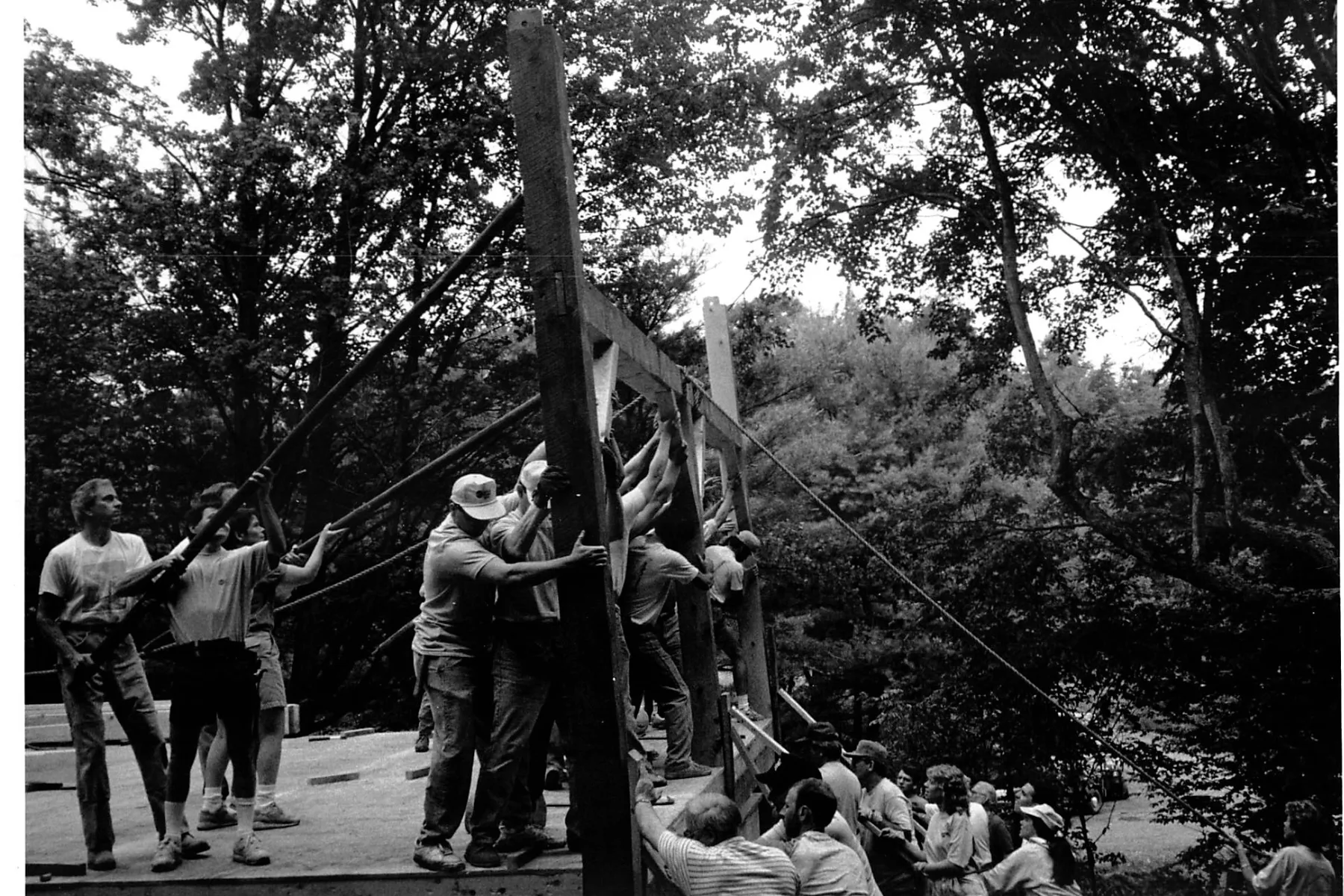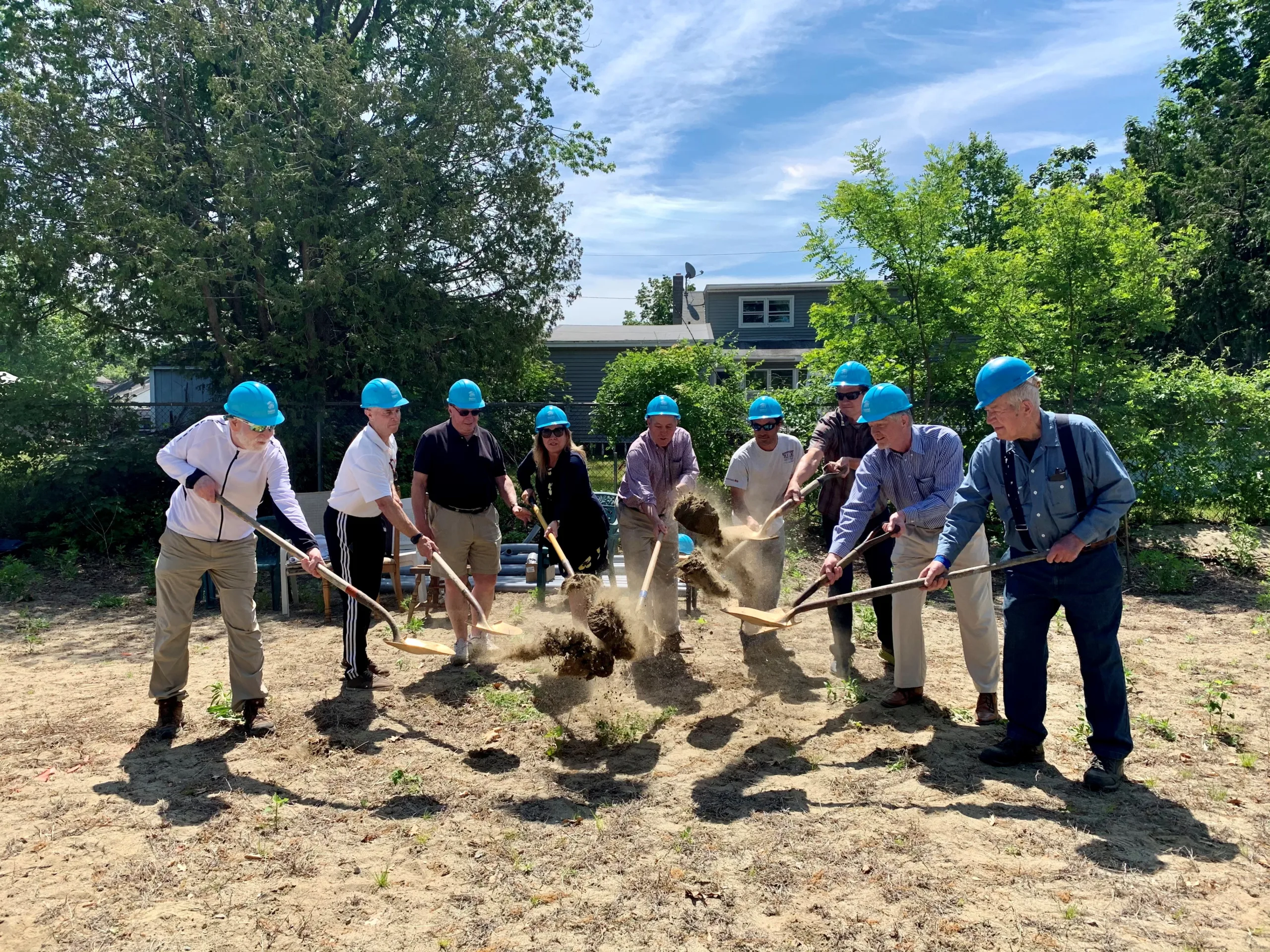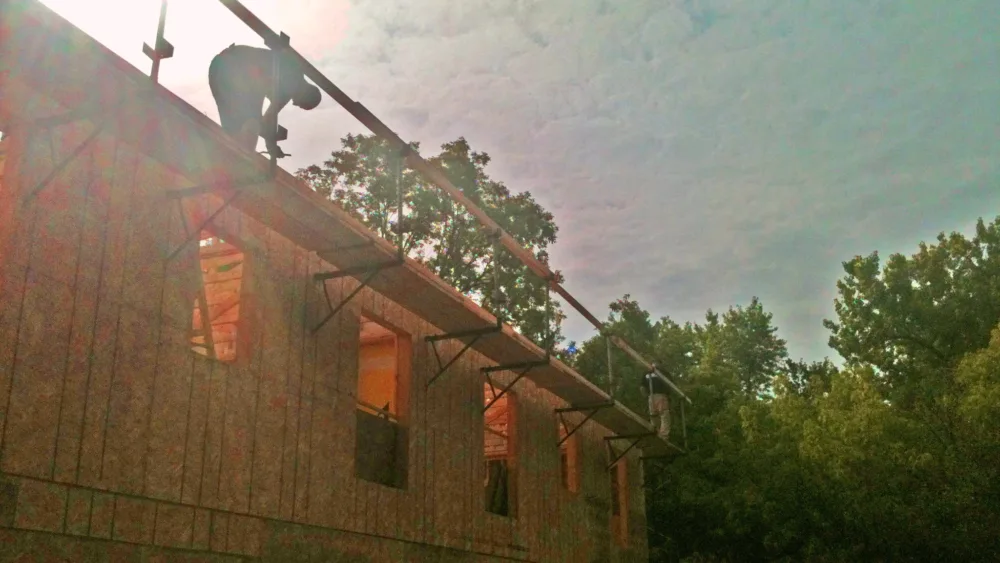Green Mountain Habitat for Humanity is a nonprofit affordable homebuilding organization that serves Northwest Vermont, which includes Chittenden, Franklin, Lamoille, and Grand Isle counties. The organization is an Affiliate of Habitat for Humanity International, which aims to increase homeownership opportunities for low-income, hardworking families.
Green Mountain Habitat for Humanity was founded in 1984, and it was a community organization from the start.
The beginnings
Carol McQuillen was a special education teacher in an elementary school in Essex, and she noticed a problem with one of her students. Two of her students were out of compliance with their paperwork, and she continuously sent information home with students to no avail.
Carol brought this information to her principal, and he said, “Hop in the car. We are going to their house.”
When they arrived at the house, they found the family, with two parents and six children, living in a rebuilt chicken coop with no running water. The parents were embarrassed of their living situation, and Carol described the situation as heart wrenching. At that moment, she knew she had to do something to help the family.
In 1982, Carol read a book called Love in the Mortar Joints by Millard Fuller and Diane Scott, which told the Story of Habitat for Humanity. She discovered the book in Hopkins Bookstore, which used to be located on Church Street and was owned by Bill and Roddy Clearly from Americus, Georgia, where Habitat for Humanity was founded.
Bill and Roddy had also recently read The Theology of the Hammer by Millard Fuller. The book highlights how individuals can put their faith into action by using the hammer as a tool to achieve the mission of eliminating substandard housing.
After conversations with Bill and Roddy, Carol knew that Vermont needed a Habitat for Humanity chapter, and she knew this was how she could help the Essex family.
Getting started
Carol, Bill, and Roddy began to speak at local churches to build their founding board and to gather support from the community.
When the Habitat chapter was being formed, the Burlington Congregational Church was involved with renovating their building to become the Ronald McDonald House in Burlington.
The two organizations would work together to share resources, connections, and other information on how to be successful as developing nonprofits. The web of connections was growing, and the Habitat group started to meet regularly to discuss the needs of families in the area. In a little under a year, the group had between ten and twelve regular members.
In 1983, the group had planned to become an official chapter of Habitat for Humanity. They sent in the Articles of Incorporation, and with tremendous coaching from leadership in Americus, Georgia, Green Mountain Habitat for Humanity became the 43rd official Habitat for Humanity Affiliate in 1984.

The first logo for Green Mountain Habitat for Humanity was created by a volunteer.
The first home
The newly formed board had regular meetings with the family, and they began looking for land and raising money. The Fundraising Committee hosted dinners, garage sales, and reaching out to other organizations. They spoke with churches, civic groups, and anyone that would listen.
While the group was looking for land and other resources, they established the Family Nurturing Committee (now called the Family Support Committee), the Site Selection Committee, the Family Partnership Committee, the Finance Committee, the Publicity Committee, the Building Committee, and the Fundraising Committee.
Members also regularly spoke at various churches to gain support. The first Board Chair, Reverend Martin Copenhaver from the first Congregational Church, played an instrumental role in leading the operations, as he had helped with creating the Ronald McDonald House. He then transitioned out of the role and helped Carol become the new Board Chair.
The young Habitat Affiliate became acutely aware that finding the land would be their biggest obstacle. Luckily, in 1985, Rod Whittier donated the lot for our first home.
“It took us a while to get the land, so we had about two years to further establish our networks with churches, in the community, and with the Home Builders Association,” said Carol. “We had better results than we would have had if someone gave us the land the first year because when we did, we were ready.”
By the time the group was ready to begin construction, the relationship with the first partner family was strong. They met regularly with the family to plan their sweat equity hours, update them on the progress, and help them with anything they needed.
Back then, families were required to put in 500 hours of volunteer labor into the construction of their own home. Now, families are required to do 200 hours if they are a single adult or 400 hours if they are a couple.

The group learned a lot from building the first home.
“They were so gracious, and everybody in the core team of Family Selection and Family Nurturing found ways to support them and get them the things they needed, such as dressers and such,” said Carol.
Board members and Family Nurturing remembers would regularly check in with the family and help them navigate the new responsibilities of owning a home.
“They were so grateful to be out of the chicken coop and to have an upstairs and downstairs. They had a full family house, for all six of them, for the first time. They were so jubilant!” said Carol.
After the first home, Green Mountain Habitat was ready to continue helping more local families. The next home was a duplex in Milton, where they adapted their skills from the first home to the second.
The group had spoken at several local schools and various churches, which is how they met the next two partner families. Word of mouth was spreading, and the community was becoming more aware of Habitat’s work in Chittenden County.
The founding members spread the mission of Habitat whenever they got a chance. They would often table at church or community events to increase the connection and engagement with the community.
Green Mountain Habitat in the 21st century
In 2002, the organization hired its first full-time employee, David Mullin. He worked in the basement of a law firm in Essex, and the output was only one house every one or two years.
Eventually, the organization hired a small staff to support the steady increase in operations and home construction. During this period almost all the funding to buy land, build homes, and finance the homes came from local individual donors, local businesses, grantors, and family foundations.
Green Mountain Habitat continued to grow, and they opened the first Green Mountain Habitat for Humanity ReStore in 2012 in Williston. The Habitat ReStore is a secondhand retailer whose proceeds fund the construction of new homes.
Due to the store’s success, they opened a second ReStore in Milton in 2016. Later, the Swanton ReStore was officially incorporated under Green Mountain Habitat’s operations.
In 2016, with the skyrocketing cost of land and building materials, Habitat needed to pivot to sustainably handle the financial operations of homeownership and partnership with local families. Green Mountain Habitat wanted to focus its efforts on building homes, not financing and mortgages.
As a result, Green Mountain Habitat was inspired by many other Affiliates around the country and partnered with local lenders, so all new mortgages were handled by other banks, which allowed the organization to focus on increasing its capacity to build more homes.

Board members, staff, and volunteers break ground in 2021.
Now in 2024, as we celebrate our 40th Anniversary, Green Mountain Habitat has over 45 employees across its administrative office, ReStores, and build sites. We are now building between five and six homes a year with hopes to increase that number to ten per year.
“We are excited for the next 40 years of Green Mountain Habitat,” said David Mullin, CEO of Green Mountain Habitat. “The need for affordable housing has never been greater, and we are committed to increasing the pool of perpetually affordable housing across Northwest Vermont.”
Carol could never fathom that her passion and dedication to helping a local family would result in such a groundswell of support in the community. Since that first home was built in the late 80s, Green Mountain Habitat has built over 115 homes across Northwest Vermont, helping hundreds of partner families achieve a safe and stable place to live.


Greetings, I believe your site could possibly be having internet browser compatibility problems. Whenever I look at your web site in Safari, it looks fine however, when opening in Internet Explorer, it has some overlapping issues. I simply wanted to give you a quick heads up! Other than that, fantastic site!
Everything is very open with a very clear description of the challenges. It was really informative. Your website is useful. Thank you for sharing!